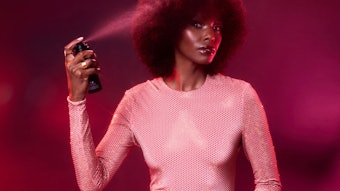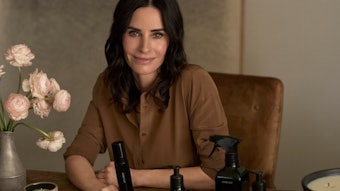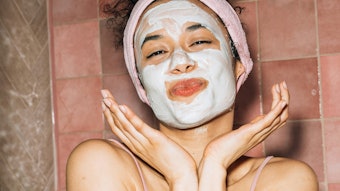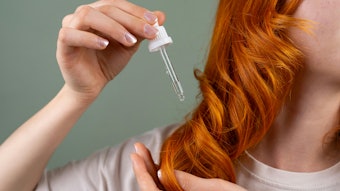Courtesy of Perfumer & Flavorist magazine.
In the crowded personal care market, it is necessary for a product to offer multiple benefits to stand apart and succeed. This means that for personal washes it is no longer just about the cleansing properties; a product must deliver more in both benefits and fragrance. Both men and women are increasingly concerned with skin health, physical appearance, well-being, moisturization and environmental responsibility. Fragrance plays a major role in helping to communicate these benefits to the consumer. Perfumer & Flavorist magazine recently spoke with IFF’s Debra Van Dyk, vice president of fragrance development, functional fragrances, to find out about the changing role of fragrance in personal wash.
P&F: What’s driving fragrance preferences in the personal wash category?
Van Dyk: Consumers tend to buy brands with which they feel an emotional connection. Fragrance is a critical factor in a consumer’s initial purchase decision, and it helps form the bond between a consumer and a brand—taking it from like to love. Consumers’ fragrance appreciation is driven by a natural desire and need for emotional connection, sensorial experience, pleasure, diversity and newness. The green movement is an emotional motivator for today’s consumers and expresses itself in a variety of ways related to fragrance.
Natural-smelling fragrances that connote pure, clean freshness are in demand and can reinforce the green footprint of environmentally responsible products.
Whatever feelings or experiences consumers are looking for as they interact with our clients’ products, fragrance is a key criterion in creating a memorable shower experience. The goal of the fragrance is to reinforce the promise or benefit of the overall product. If the product claims to offer a relaxing/calming experience in the shower, IFF’s consumer insights allow perfumes to efficiently develop an aroma to promote relaxation and calm, a fragrance conveying a sense of well-being or even a spa atmosphere.
In the past, fragrance trends trickled down predominantly from the world of prestige and fine fragrance. This is no longer the case. We are seeing very inspirational fragrances coming from every product category that may impact personal wash. Our perfumers seek inspiration from diverse consumer markets, cultures and climates, including: cuisine, fashion, botanicals, cosmetics, beauty care, etc., to create fragrances with which the consumer will connect deeply.
Sensorial experiences such as creamy textures and rich gourmand desserts are other consumer favorites that offer pleasure and variety in personal wash. IFF’s flavorists are able to team up with our fragrance experts to create fun and excitement with creamy cosmetic gourmand notes. Their creations influence consumer perception of skin care, moisturization, sensuality and luxury.
Consumers are always looking for new experiences. Exploring fanciful and exotic combinations of flowers and fruits is definitely part of IFF’s creative vision. IFF’s Consumer Insights’ Newness tool helps perfumers dissect the effect of change in the minds of consumers, in order to understand the comfort level people in different markets have for what is new to them.
Fragrance preference is also driven by performance and power. In many cases, the more consumers like what they smell, the more they want to smell it—from the product, while bathing and afterwards on their skin. IFF’s sensory and analytical research supports the creative team in its understanding of which notes and materials perform best.
P&F: What are the unique demands for masculine and feminine categories? Are these evolving? If so, how?
Van Dyk: In a crowded market, successful products capture consumer interest with differentiable feminine and masculine benefits and fragrances. Delivering products and fragrances that capture the attention of the masses is no longer the only route to success. Successful product ranges are also targeting smaller unique consumer segments with benefits and fragrances loved specifically by these groups, which may not directly appeal to the masses, but bring incremental users to the brand. For women, the trends in personal wash go beyond cleansing efficacy; cleansing is a given. Now women demand that their products do more for skin health, physical appearance, well-being or the overall shower experience. Even the most functional of soap products are offering moisturization benefits or exfoliation with ribbons, beads, oils and natural ingredients. We are also seeing age-defying/pro-age elements, vitamins, nutrient replenishment, antioxidants, hydrating and end-look benefits such as skin luminosity, glow, radiance, brightness, smooth skin, etc. Natural ingredients will continue to grow in importance among women. Environmental responsibility values for products is just beginning and communication that focuses on naturals, organics, etc., is a stepping stone for providing these values. All of these extra benefits are going to become increasingly important as consumers’ expectations increase.
Women are very knowledgeable about their fragrance likes and dislikes. They want their personal wash fragrances to be sophisticated and fun. This often requires elements that connote natural caring and sometimes sensual beauty. There is a move away from simple gourmand blends toward warm, sexy, beautiful, indulgent fragrances that enhance attributes of nourishment, moisturization or hydration in the product. Themes are sophisticated and complex yet comfortable and sexy, greatly influenced by combining fine fragrance and gourmand trends.
For men, what was once a deodorant claims (or deodorancy) market for personal wash is now being revitalized by following cues in skin cleansing and care from women’s products. There will continue to be both ends of the spectrum in men’s products: products that target men who want a more involved personal-care routine and products that target men who want to simplify.
For men who are looking for simplicity, there are an increasing number of 2-in-1 products that can serve double duty. Watch for 3-in-1’s soon. If men can use one product that cleans and has a positive effect on their appearance, hair or skin health, that’s a bonus. Manufacturers are becoming savvier as to the differing needs of men’s skin. They are offering new sensitive formulations to address the need for skin-caring products. Thanks to the men’s body wash explosion, there’s a much broader range of fragrance styles being accepted by men than ever before, allowing for a continuation of innovative fragrance types in the future. The men’s market is seeing more blends of olfactive families with increased complexity, fine fragrance influence and sophisticated styles. There is also an increase of modern fougères with unisex clean, crisp top notes being favored by men. Scent is clearly at the top of men’s minds and products are responding, such as with claims of longer-lasting scent technology.
P&F: What types of scents are being offered in the category?
Van Dyk: Overall, the category is evolving rapidly, with olfactively interesting new options available to the consumer every day. As the market becomes more cluttered, it is important to use the right fragrance to reinforce a brand and support the product’s message.
For women, personal wash has evolved into a more complex fragrance experience than ever before, wherein personal wash can be fun and sensorial at the same time. Meanwhile, a unique olfactive trend seen in both men’s and women’s personal wash products is the use of contrasting notes balancing freshness and warmth within a fragrance. Some current trends are:
- Complex blends growing faster than fragrances dominated by singular notes
- Fruity accords that convey freshness, as well as subtle fresh floral notes • Gourmand fragrances, blending fine fragrance types and creamy textures with indulgent edible notes
- New olfactive proposals that are changing consumers’ preferences toward what is the smell of clean
- Caring blends accented with crisp or exotic notes, as opposed to the singular citrus blends of the past that needed to convey only cleansing
- For men, classic fougère fragrance types still prevail in masculine personal care products, but there’s a shift toward new fresh and spicy accent notes and blends that add modernity and a sensorial experience
P&F: Natural is today’s hot-button marketing term. But what challenge does that present for IFF’s fragrance formulators?
Van Dyk: One of the biggest challenges is that there is no consistent global definition of just what is natural or “green” in terms of finished fragrance products. Everyone has his own definition.
Naturals tend to be defined as plant extracts derived from cold pressing or steam distillation. Today, only a small percentage of the global perfumery palette is certified as natural, so you can imagine it is incredibly restrictive in terms of the amount of ingredients available and also price, as naturals are usually far more expensive.
IFF’s foresight years ago in acquiring high quality naturals’ producer Laboratoire Monique Remy has positioned us to lead efforts to increase IFF’s palette of unique naturals, by any definition. As the trend continues, our perfumers are responding in ever more creative ways.
It is interesting to note that the general public tends to equate the word “natural” with safety, but there are many natural toxins/allergens and many naturals need synthetic antioxidants to be safe. In some cases, synthetics are needed for the safe processing of naturals. So, the definition of naturals can be very dependent on how strict one has to be about not only the source, but also the processing (please refer to the Dec. 5, 2005 IFRA information letter #737).
If the idea is to preserve nature from a sustainability platform, IFF’s Nature-Inspired technology enables perfumers to reconstruct the natural smells of fruits, flowers and plants in the air without harvesting crops. In IFF’s botanical research gardens, the life cycle of thousands of botanicals are constantly studied. We understand how nature communicates with us through aroma and work to capture this communication to recreate nature’s essence for our customers. At the same time, we have unique capabilities when it comes to studying consumers’ actual perceptions of what is (or seems) natural to them.
P&F: Are there any technologies that are boosting the effects of personal wash fragrances?
Van Dyk: IFF has different programs in place that involve encapsulation of fragrance to deliver more fragrance to skin and hair. But as you can imagine, there are challenges such as deposition without aversely affecting the finished product and consumer perception in use. IFF also has programs involving encapsulation of fragrance to increase the “bloom” of the fragrance in use.
There is a definite gap between what consumers want and current levels at both of these stages. Many of the challenges are, of course, related to the cost of systems that will do this effectively and also the safety of any system in a product that is so intimate with the consumer.
P&F: How is the functionality of personal wash products being innovated/ improved?
Van Dyk: Innovations and improvements are being made to deliver: moisturization and skin care benefits; experiential color/texture/fragrances; more cost-effective formulations in the face of increasing raw material prices; odor neutralization for liquid hand soaps; and environmentally friendly refill packaging for liquids.
There has been significant activity in products that moisturize. For fragrance houses, it is a double-edged sword as the actives that moisturize suppress fragrance from the bottle or packet and in use. However, moisturizing agents do help more of the fragrance deposit on skin and stay there a little longer. It’s been necessary to adjust the way we create accordingly, especially to compensate for the suppression.
Consumer expectations for product efficacy require understandable, credible ingredient stories and a fragrance that reinforces the product promise. As deep moisturization becomes increasingly important, consumers seek out natural ingredients on the label that have a skin-hydrating effect and they look for the science to prove it. The fragrance created for those products will have olfactive cues for moisturization and soft skin to help tell the story. Furthermore, those fragrances can and will be technically stable and offer long-lasting effects, if that is what the product promises. The men’s market is also becoming very important in personal wash with more and more care products, rather than just for cleansing.
New product development in personal wash is more active in the liquids category with novel products having food-like texture, color and fragrance. On the experiential side, we’ve seen smoothie or whipped cream-type dual-phase body washes and liquid hand soaps. This type of product is often fragranced with strong edible notes. On the functional side, we’ve seen liquid hand soap claims for odor neutralization.
P&F: Our editors have reported that some companies are looking to the nutraceutical and supplement markets for ingredient trends to apply to the personal wash arena. Are you seeing that?
Van Dyk: Yes. While IFF’s technical and R&D teams assess areas such as nutraceuticals for their potential, the global marketing and consumer insights teams work together to discover the next hot ingredients that consumers are going to look for in personal care. Fortunately, we are able to gauge consumer interest and acceptability and discover how these ingredients are associated with various product benefits. Inspiration for these ingredients may come from the nutraceutical or supplement markets as well as a variety of other sources.
Clients frequently ask what benefits can be added through the fragrance, and IFF perfumers can help to an extent. But fragrance is normally in a finished product formulation at 1% or less, so adding a vitamin or antioxidant, for example, to a fragrance to obtain a meaningful level in the finished product would take up a lot of space in the fragrance formulation. And there may be more efficient ways of adding these supplements. Of course, one class of supplement we are often adding—and this relates to naturals—is essential oils.



!['Snoopy and Woodstock are cherished [characters] across generations and pairing them with our most-loved body care essentials creates a collection that feels classic with a modern twist. This launch is about celebrating our community with something unforgettable while starting an exciting new era for the brand,' said Luis Garcia, Chief Marketing Officer.](https://img.gcimagazine.com/mindful/allured/workspaces/default/uploads/2025/10/tree-hut-peanuts-fullcollection-fall26-1x1-1253.lGcuurUszp.jpg?auto=format%2Ccompress&fit=crop&h=191&q=70&w=340)






